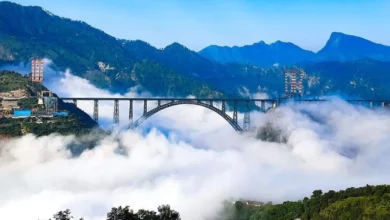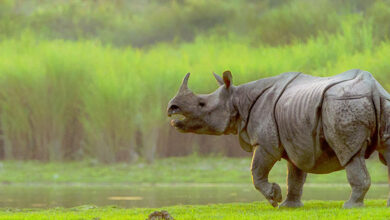
ENGLISH CHANNEL
History of Pride Parade
There are no two opinions that people belonging to the LGBTQ community have been victims of many crimes, violence, discrimination as well as outright prosecution. For years they were treated as second class citizens, labeled as suffering from mental Illness or worst yet the whole idea of homosexuality was considered a criminal offense.
The month of June is celebrated as Pride month worldwide in an attempt to undo the injustices suffered by the community as well as assert their right to equality and dignity. While Pride month and all the events centered around it may look like a giant rainbow-themed party, it is much more than that. It is to commemorate the anniversary of Stonewall riots that took place in New York City in 1969, which also sparked the modern LGBT movement.
In 1950’s homosexuality or sodomy as the legal term back then was, a criminal offense, state maintained a list of known homosexuals, the university fired professors suspected of it, similar was the situation in all other public services. Drag attire, cross-dressing all was considered an offense, gay pubs and bars were shut down and their address was kept a track of by US Postal Service.
So understandably most establishments denied entry to gay people and there were several bars known to be frequented by members of the LGBT community. The Stonewall Inn in Greenwich Village, Manhattan was one of them. It was controlled by the mafia, there were reports of alcohol being served there was stolen.
It had an assortment of clientele and was known to be popular among the most marginalized people in the gay community: butch lesbians, effeminate young men, drag queens, male prostitutes, transgender people. Stonewall Inn was raided by the NYPD in the early morning hours of June 28, 1969. Protests broke out in response to it, there was a clash between the police and the LGBT community.
The riots continued for three days and people who weren’t involved in LGBT rights activism also stood against the prosecution. It turned into an LGBT rights movement that launched organizations such as the Gay Liberation Front and the Gay Activists Alliance. They held protests, met with political leaders, and disrupted public meetings to hold leadership accountable.
A year after the riots, the Gay Liberation Front organized the first Christopher Street Liberation Day March (later known as the Gay Pride March), along the street where Stonewall Inn is located. The term Pride was coined by L.Craig Schoonmaker later on the rationale behind was simple, anyone can have pride in themselves, and that would make them happier as people, and produce the movement likely to produce change.
The idea of gay pride parade was given by Brenda Howard known as the mother of pride to organize a week-long festivities to pay homage to the injustices of the stonewall inn as well as assert their identity. Pride month was first given legal status as gay and lesbian month by the Clinton government in 1999 and then by the Obama government in 2008 as LGBT month to make it more inclusive. This has over the years evolved into Pride month as we know now.
Moving closer home, India has an interesting history of Pride Parade too.
Though Indian scriptures, sculptures, and Kamasutra have mentions of homosexuality thus proving that it wasn’t viewed as a crime in Ancient times. It was only criminalized by the British Empire during their colonial rule. In 1860, homosexual intercourse was considered unnatural and was declared a criminal offense under Chapter 16, Section 377 of the Indian Penal Code. Even after independence, this law remained unchanged although prosecution under this law was rare. India saw its first gay rights movement launched in the 1990s.
It had to wait until 1999 to witness its first Pride Parade. Kolkata known for its liberal culture as well as the rich tradition of various human rights movements was selected as the perfect site for this. The first pride parade was called Rainbow March of Calcutta and was attended by only 15 people. More than 20 years later, now Pride marches and parades are held over 21 major cities. Till 2008 Pride Parade was exclusive to Kolkata, in 2008 Delhi, Bangalore and Pondicherry had its own pride parade in coordination with Kolkata.
2009 was a golden year for the LGBT community for the Delhi High Court in its landmark judgment of Naz Foundation v. Govt. of NCT of Delhi case held that treating consensual homosexual sex between adults as a crime is a violation of fundamental rights protected by India’s Constitution. In 2013 the Supreme Court judgment reinstated section 377 after the Delhi High Court overturned it in 2009.
Bangalore Pride and Delhi Pride are two of the most vibrant and active pride marches in the country. While the Bangalore one is a month-long event full of festivities and celebration, even receiving corporate support by industry leaders like Google and Goldman Sachs. Delhi has its annual pride March on last Sunday of November, it also incorporates fighting for feminism and Dalit right, making it a huge amalgamation of human rights March.
In 2017, pride parades all over India collectively condemned the proposed Transgender Persons Bill 2016 for its problematic definition of transgender among other things. It was finally in 2018, the Supreme Court ruled unanimously that Section 377 was unconstitutional “in so far as it criminalizes consensual sexual conduct between adults of the same sex” This marks the end to years-long struggle against the criminalization of homosexuality. However the war is not won yet, it is still a long way to go before gay marriages are given legal status.
राज्यों से जुड़ी हर खबर और देश-दुनिया की ताजा खबरें पढ़ने के लिए नार्थ इंडिया स्टेट्समैन से जुड़े। साथ ही लेटेस्ट हिन्दी खबर से जुड़ी जानकारी के लिये हमारा ऐप को डाउनलोड करें।




